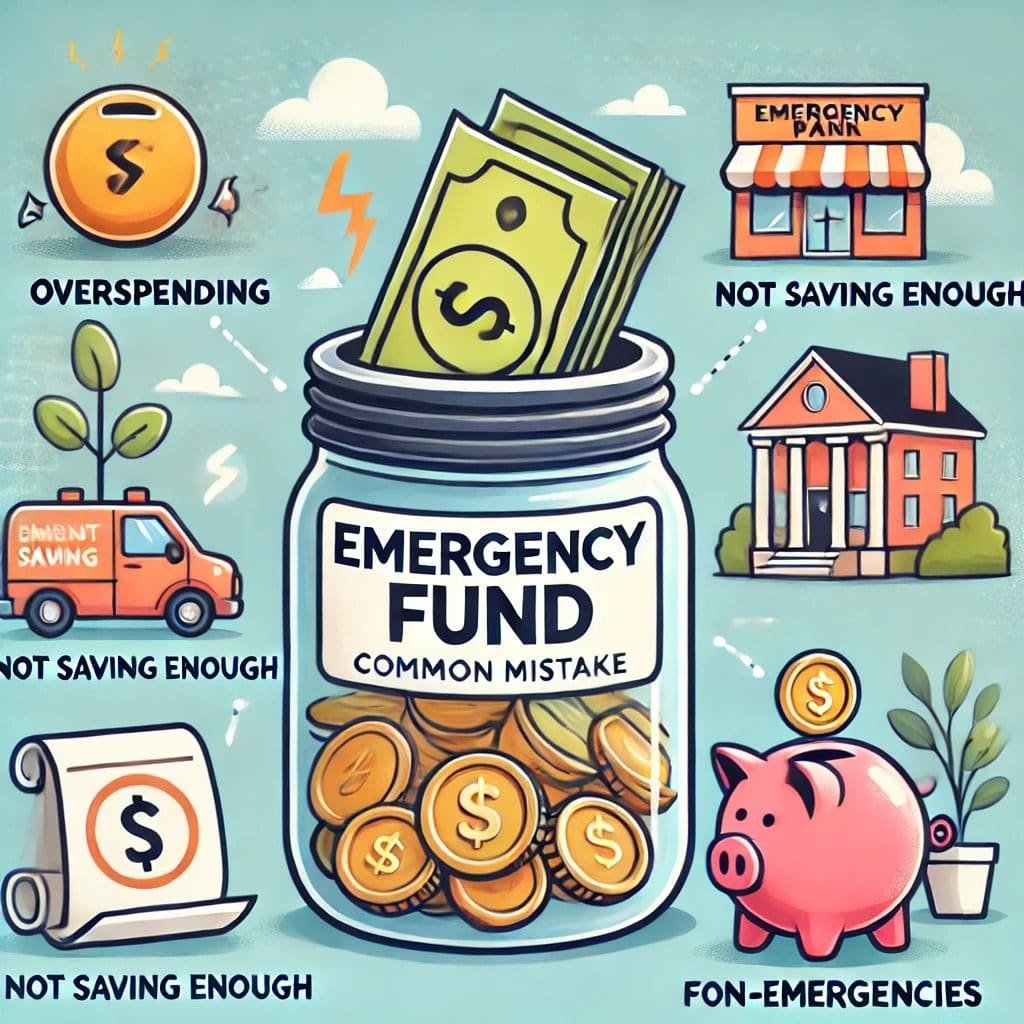An emergency fund is a crucial financial safety net, designed to help you cover unexpected expenses without derailing your budget or going into debt. However, even with the best intentions, many people make mistakes that can undermine the effectiveness of their emergency savings. Understanding these common pitfalls can help you avoid them and ensure that your emergency fund serves its intended purpose.
1. Not Saving Enough
One of the most common mistakes is underestimating how much you need in your emergency fund. While any savings are better than none, having too little can leave you vulnerable when faced with significant expenses.
Recommended Savings:
• Financial experts generally suggest saving three to six months’ worth of living expenses. This amount should cover essentials like rent or mortgage payments, utilities, groceries, insurance, and minimum debt payments.
Why It’s Important:
• Having an insufficient emergency fund could force you to rely on credit cards or loans, leading to debt accumulation and financial stress.
2. Using the Fund for Non-Emergencies
Another frequent mistake is dipping into your emergency fund for non-emergency expenses. It’s tempting to use this money for things like vacations, holiday shopping, or big-ticket purchases, but doing so defeats the purpose of having a dedicated safety net.
What Counts as an Emergency:
• Genuine emergencies include unexpected medical expenses, car repairs, job loss, or urgent home repairs. If the expense isn’t urgent or necessary, it’s better to save for it separately.
Why It’s Important:
• Using your emergency fund for non-emergencies can deplete your savings, leaving you unprepared when a real emergency arises.
3. Not Replenishing the Fund After Use
Once you’ve tapped into your emergency fund, it’s crucial to prioritize replenishing it. However, many people neglect this step, leaving them with a diminished safety net.
How to Replenish:
• After using your fund, adjust your budget to allocate a portion of your income towards rebuilding your savings. Treat replenishing your emergency fund as a top financial priority until it’s fully restored.
Why It’s Important:
• Without a fully replenished emergency fund, you’re at risk of being caught off guard by the next unexpected expense.
4. Keeping the Fund in an Inaccessible Account
While it’s important to keep your emergency fund separate from your everyday spending money, storing it in an account that’s too difficult to access can create problems when you need the money quickly.
Best Account Types:
• A high-yield savings account or a money market account are good options. These accounts provide easy access to your funds while earning interest.
Why It’s Important:
• If you can’t access your emergency fund quickly, you may be forced to use credit or sell investments at a loss to cover urgent expenses.
5. Ignoring Inflation
Inflation can erode the purchasing power of your emergency fund over time. If you’re not regularly contributing to your fund or keeping it in an interest-bearing account, its value may not keep up with rising costs.
How to Combat Inflation:
• Regularly review your emergency fund and adjust the amount you’re saving to account for inflation. Keeping your fund in a high-yield savings account can also help it grow over time.
Why It’s Important:
• Ensuring your emergency fund grows with inflation protects your ability to cover rising costs in the future.
6. Over-Complicating the Fund
Some people make the mistake of splitting their emergency fund across multiple accounts or mixing it with other savings goals. This can make it harder to manage and track your emergency savings.
Keep It Simple:
• Use one dedicated account for your emergency fund, separate from other savings. This approach makes it easier to manage and ensures you know exactly how much is available for emergencies.
Why It’s Important:
• Simplicity makes it easier to monitor your savings and access the funds quickly when needed.
Conclusion
Avoiding these common mistakes can help you build and maintain a strong emergency fund that’s ready to support you in times of need. By saving enough, using the fund wisely, and regularly replenishing it, you can ensure that your emergency savings provide the financial security you need when the unexpected happens. Remember, the key to a successful emergency fund is discipline, planning, and regular maintenance.



4 comments